Kutaisi is the capital of Imereti region in Georgia. It has a deep history as it is the 5th oldest city in Europe and the Silk Road passed through here. Recently, low-cost airlines have launched many flights from Europe to Kutaisi Airport. Therefore, the number of tourists coming to the city has increased and new places have started to open. As someone who lives in Georgia for 6 years, I have been to Kutaisi many times and I would like to introduce this little-known city to you. Here is list for top things to do in Kutaisi and around.
Before making a Kutaisi plan, you should read my separate article with details such as transport, accommodation, food and beverage, weather, trip duration, etc.
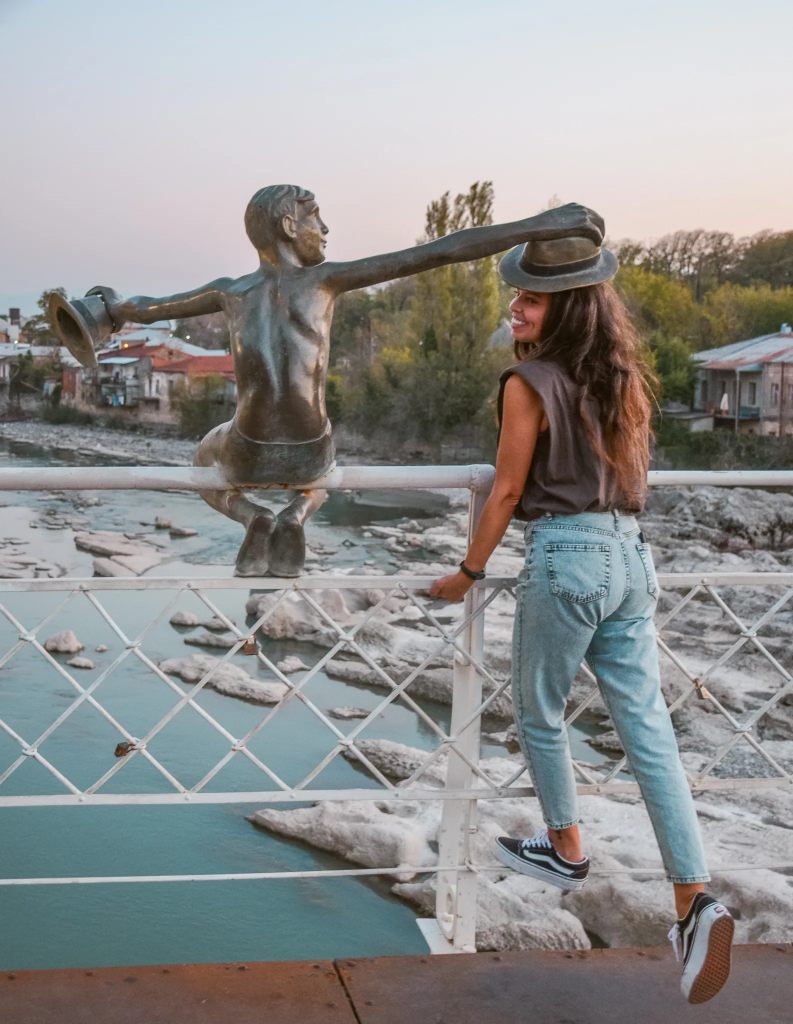
Kutaisi Travel Itinerary: Things to do in Kutaisi
First of all, I will write the main places to visit in Kutaisi city centre.
Bagrati Cathedral: Built in the 11th century, I can say that this historical cathedral is the symbol of Kutaisi. It survived until the 17th century Ottoman occupation and was rebuilt in 2010. The cathedral is located on Ukimerioni Hill and you can see panoramic views of the city from here. You can also watch a beautiful sunset.
Since 1994, the cathedral has been on the UNESCO World Heritage List, but in 2010 it was removed from the list on the grounds that the restoration damaged the originality and integrity of the cathedral.
Kutaisi Synagogue: Built in 1886, this synagogue is the most magnificent of the three synagogues in the Jewish Quarter of Kutaisi. If you are interested in religious buildings, you can visit this second largest synagogue in Georgia.
Gelati Monastery: It is located about 10 kilometres from Kutaisi, surrounded by natural beauties. Built in the 12th century, this monastery complex sheds light on the history of Orthodox Christianity in Georgia. With its frescoed walls and historical value, Gelati is a UNESCO World Heritage Site.
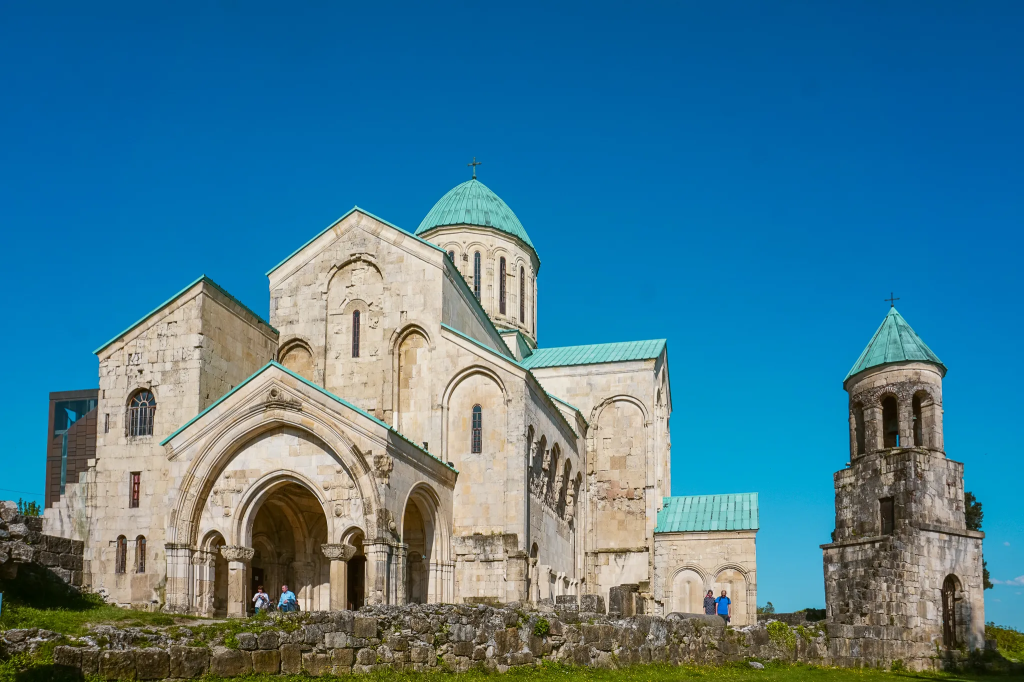
Colchis Fountain: Located in the main square of Kutaisi, this impressive fountain is decorated with golden figures referring to the golden age of the Colchis Kingdom of Georgia. The golden statues on the fountain are replicas of figures found during archaeological excavations in different parts of the country.
White Bridge: The iron frame of the bridge over the Rioni river was imported from France in 1872 and replaced the wooden bridge damaged during the floods in 1860. Since this iron skeleton is white, it is called the White Bridge. There used to be a tradition of being baptised as a Kutaisian by jumping into the river from the bridge. A sculpture of a boy called Picasso’s Boy was made on the bridge with two hats in his hands to represent this tradition. The statue seen in the first photo of the article.
Retro Cable Car: Built in 1961 during the Soviet period, the nostalgic cable car is still in use. You can ride these cable cars dating back to Noah’s Prophet and watch the beautiful view of the city over the river while having small adrenaline attacks wondering if you will fall.
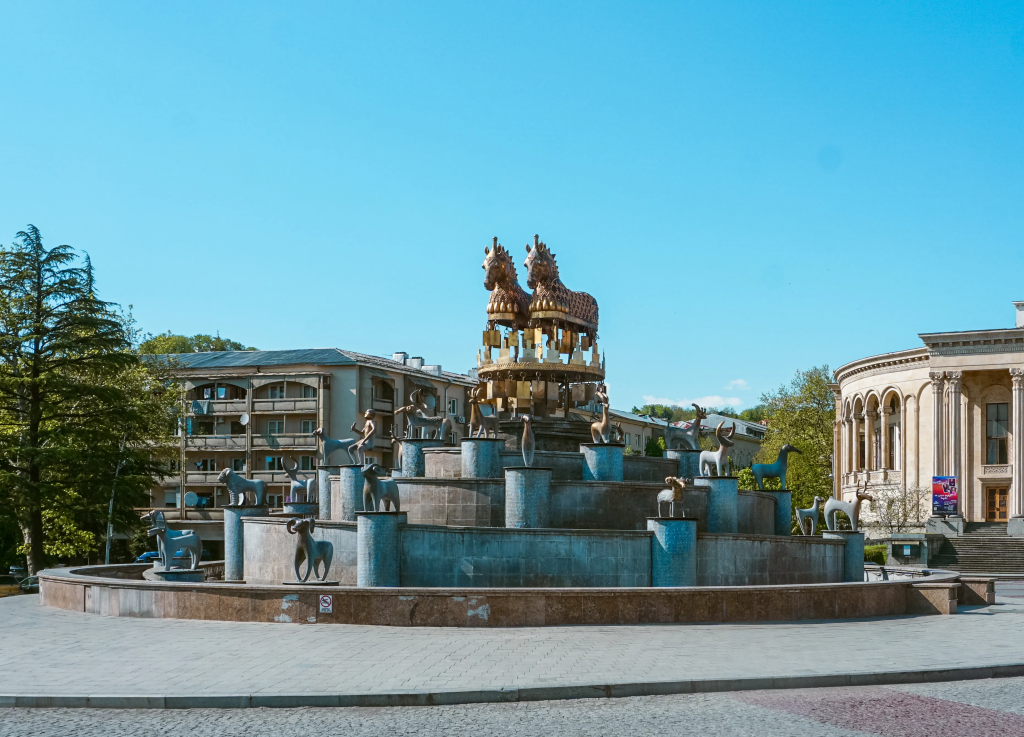
Meskhishvili Theatre: Since 1861, stage performances have been held in this historical theatre, and many events are still being organised. You can check the programme on tkt.ge and watch a show here.
Kutaisi Botanical Garden: Located near Bagrati Cathedral, the botanical garden is the third largest botanical garden in Georgia with 700 plant species from all over the world.
Green Bazaar: This is Kutaisi’s permanent market. It is a place where you can find all kinds of local food, ranging from vegetables and fruits to cheeses, spices and meat products. The real beauty of this place is the giant relief from the Soviet period in front of it. It is really very impressive.
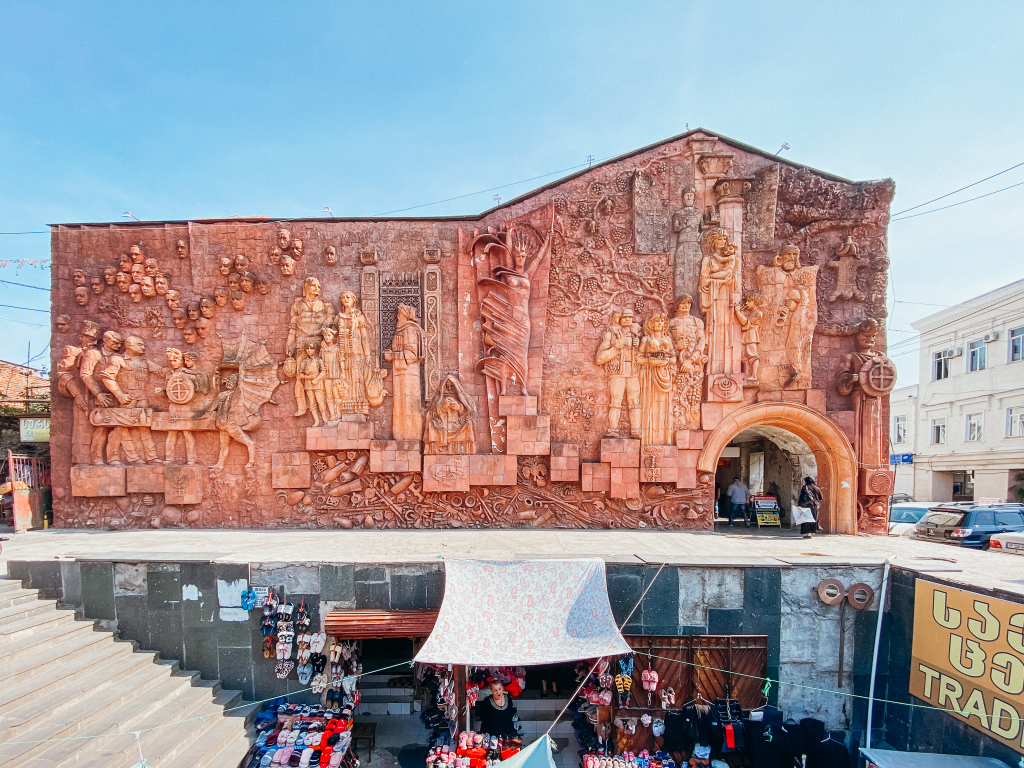
Kutaisi State Historical Museum: This museum is the ideal place if you want to explore Kutaisi’s history and cultural heritage in depth, showcasing the rich history of the region from prehistoric times to the present day. There are archaeological artefacts, works of art and ethnographic collections.
Okros Chardakhi: Also called Golden Marquee, it is known as one of the houses of the Imereti king. It was first mentioned in written sources in the 15th century and mentioned as a palace consisting of more than one residence, but today only one house has survived. At the moment, you cannot enter inside due to restoration.
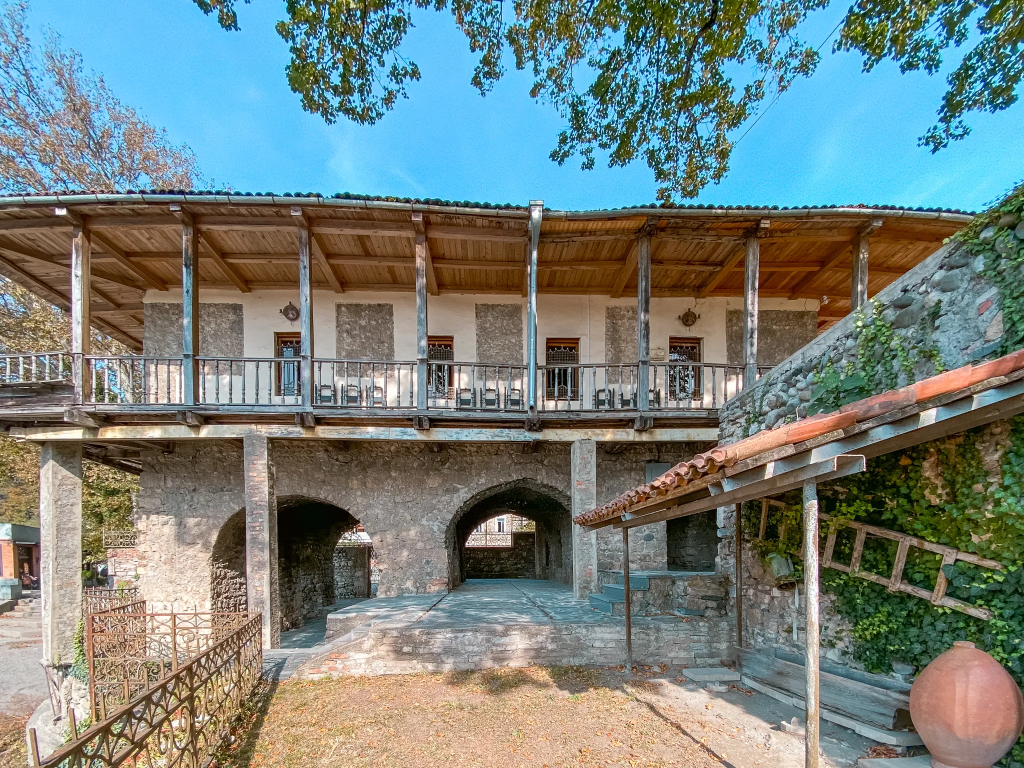
Best Day Trips From Kutaisi
Where to go for a day trip from Kutaisi? In this section, I will share places that are 1-2 hours away from Kutaisi.
Martvili Canyon, Okatse Canyon, Prometheus Cave, Sataplia Nature Reserve
Martvili Canyon, located 1 hour from Kutaisi, is one of the popular tourist attractions in Georgia. I definitely recommend it for nature lovers, but it is not a very big canyon, don’t be disappointed. The canyon is covered with lush green forest and there is a 700 metre walking path. There are 6-person rubber boats and guides on the banks of the Abasha River passing through the canyon. With these boats, you can go back and forth in a section of 300-350 metres, watching the waterfalls flowing next to you. Martvili Canyon is open all year round, but there is no boat trip in rainy weather. Although you can go in winter, I would say that the best time to go is from April to November. The entrance fee is 17 GEL and the boat ride is 15 GEL.
Sataplia Cave and Natural Reserve, located 20 minutes from Kutaisi, was discovered in 1925 by the scientist Petre Chabukiani while searching for the settlements of primitive people. The cave is 900 metres long, more than 10 metres high and 14-15 metres wide. The cave consists of chambers covered with stalactites and stalagmites. It is not just a cave, there are beautiful walking paths and a glass observation terrace with a wonderful view. If you like to hike in nature with beautiful views, I can say that this place is for you. About 200 dinosaur footprints were discovered in the reserve. The reserve is open to visitors throughout the year, but they close the glass observation terrace in rainy weather. Entrance fee is 17 GEL.

Okatse Canyon, the deepest canyon in the country, is located about 75 minutes from Kutaisi. There is a 2-3 km walking path from the visitor centre at the entrance to the canyon. If you do not want to walk this road, you can go by off road vehicles for an extra fee. The length of the canyon is 14 km and the depth varies between 20 metres and 100 metres. You can visit the 2 km long part of the canyon by using the hanging path. You will see many waterfalls along the walk. Although the canyon is open all year round, they close it in winter when it rains and snows. Entrance fee is 17 GEL.
40 metres deep Prometheus Cave is located half an hour away from Kutaisi. It is a complex of 22 caves, 6 of which are open to visitors. The caves are home to nineteen species of aquatic plants and about forty species of insects, invertebrates and molluscs. Fragments of skulls and fossils of many animals have been found inside the cave. The total length of the cave is 11 km, there is a walking path of about 1.5 km open to visitors, and a 380 metre long section can be explored by boat. The entrance fee is 23 GEL and the boat ride inside the cave is 17 GEL.

Katskhi Pillar
About 1.5 hours from Kutaisi, Katskhi Pillar is a 40 meter high monolith in the village of Katskhi. There is a small church on the summit of this limestone pillar, the product of tectonic changes. It is estimated that this church was built in the 9th or 10th century. How they were able to build this structure on the top of the rock at that time remains a mystery. The first historical information about this column was given by the Georgian historian and geographer Vakhushti Bagrationi in the 18th century. In 1944, a small group of mountaineers and archaeologists climbed the abandoned Katskhi Pillar. After this discovery, scientists began to actively explore the site. Historians believe that the pillar was abandoned in the 15th century. If you don’t have a car, to get to Katski Pillar, you can take the marshrutkas from Kutaisi to Zestofani and tell the driver that you want to go here, or you can hire a taxi driver to take you to Chiatura and Katski Pillar. I will tell you about Chiatura below.

In 1990, a local monk named Maxime Qavtaradze decided to reconstruct the monastery at the top of the Katshki Pillar. Having the permission of Patriarch Ilia II, the spiritual leader of the Georgian Orthodox Church, he restored the old churches and cells with the help of the Georgian government. Since 1995, after the restoration was completed, the monastery life at Katskhi Pillar has begun again.
It is forbidden to go up to the church above, but you can enter the garden where it is located and visit the new church below. This church is dedicated to the Syrian Christian monk Simeon Stylites, the first known pillar monk in history. The monks living below climb up the metal ladder attached to the edge of the rock to pray. They believe that this would bring them closer to God. These stairs to the top are called the stairs to heaven by the local people. Until 2018, visitors could go up. Then Patriarch Ilia II issued an edict that only monks were allowed to enter the church and it was banned.

Tskaltubo
It is a former holiday town located 15 minutes drive from Kutaisi. Tskaltubo, which was a world-famous balneological centre during the Soviet era, now looks like a ghost town full of mostly abandoned buildings. In many parts of the town, you will see old Soviet sanatoriums and abandoned baths. Before going into details about Tskaltubo, let me tell you about transportation from Kutaisi. If you do not have your own car, you can easily reach by minibuses. Minibuses numbered 30 leave every 20 minutes from 8 am to 7 pm from the Red Bridge. The other alternative is minibuses number 34 from Kutaisi central bus station. You can take the one which you are close to. The price is 2 GEL and the journey takes about 20 minutes. On the way back from Tskaltubo, you can take minibuses 30 or 34 going in the opposite direction.
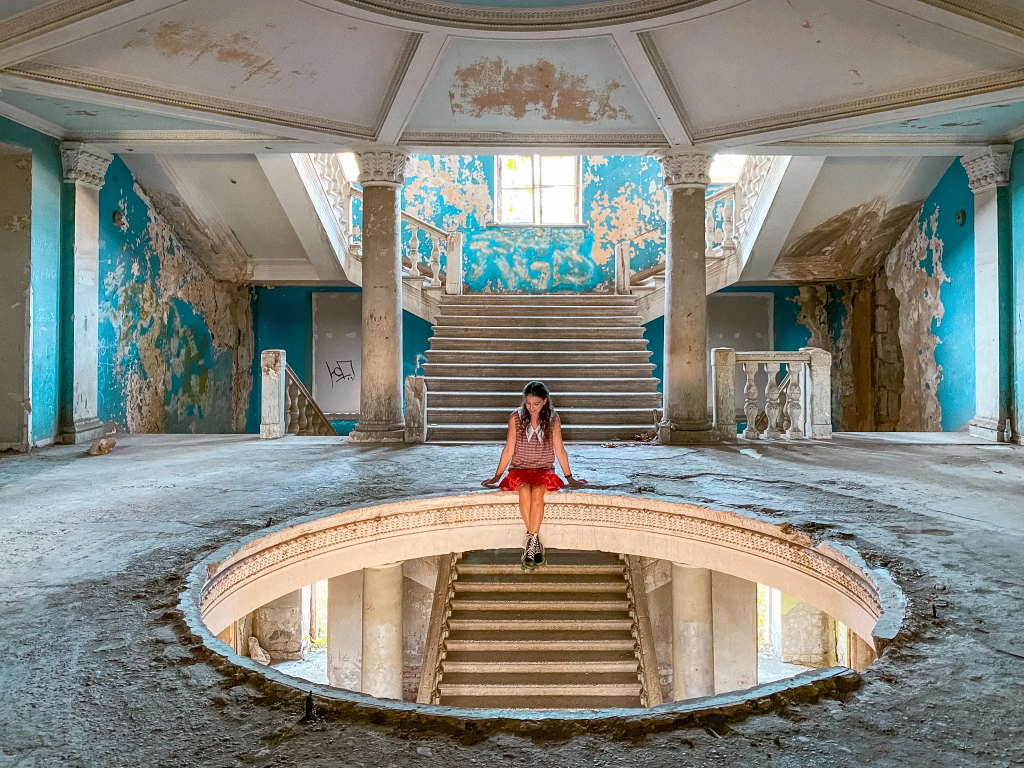
The thermal waters in the area were discovered by chance by a local shepherd in the 13th century.Several sanatoriums were built here before the Second World War, but its real popularity began after the war. There were direct trains from Moscow and other major cities of the Soviet Union to the town every day and more than 100,000 people visited Tskaltubo every year. The most famous visitor was Stalin, who had a private bath in bath number 6. After the collapse of the Soviet Union, not many people visited Tskaltubo, as most of the visitors were from Russia and other USSR countries. Due to the poor economy of Georgia and the occupation of Abkhazia, this place was completely forgotten. Some people displaced by the situation in Abkhazia have moved here and live in half-ruined sanatoriums. Some of the baths and sanatoriums are really fascinating, here are a few of our favourites: Sanatorium Iveria, Sanatorium Medea, Sanatorium Metallurgist, Sanatorium Shakhtiori, Bathhouse No 8 and Bathhouse No 6 where you can see Stalin’s private bathroom.

Chiatura
Chiatura is a mining city founded at the end of the 19th century with the discovery of manganese reserves. During the Soviet period, many mines were opened and the manganese extracted from here was sent to all USSR and world countries. After the welfare of those years, this place lost its popularity with the collapse of the Soviet Union. Nowadays, it is a quiet little town with many abandoned buildings and only a few mines working. In recent years, Chiatura was still popular for tourists because of its old rusty cable cars. Some curious tourists were coming from all over the world just to ride these cable cars, which they called flying tombs. Like skydiving, paragliding, etc., they were coming to ride them and experience some kind of adrenaline. These cable cars were opened in 1954 for people working in the mines to go home quickly. There has been almost no renovation since it was built, so it was quite risky to ride.
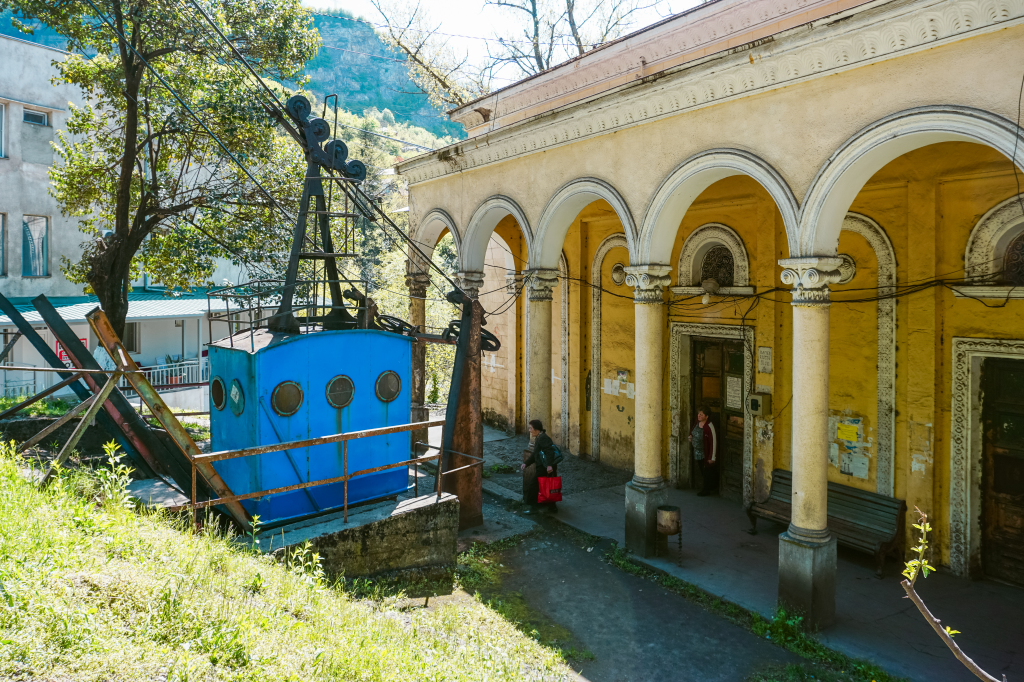
In 2019, when we went as a family, these cable cars were working, but my son was still very young and I didn’t want to take that risk leaving him behind with my husband. When we went in 2020, we saw that the cable cars were removed. In 2021, they put new modern cable cars. In other words, the main tourist attraction of Chiatura has disappeared, but there are still people who like to visit. If you like Soviet architecture, if you are fascinated by seeing abandoned old buildings from that period, you can visit this place together with the Katskhi Pillar I told you above.

Is Kutaisi Georgia worth visiting?
I have already explained the main places to visit above, if you are interested in these, it is definitely worth it. If you ask my opinion, I can honestly say that Kutaisi would not be my first choice in Georgia. If you have a long time in Georgia and you like to visit places from the Soviet period, if you like natural beauties mentioned above, you can plan a visit. If you are coming to Kutaisi because of affordable flight tickets, I recommend you also plan to visit some other places in Georgia, at least Tbilisi.
I hope my article on things to do in Kutaisi will be useful for you and you will make a nice Kutaisi trip itinerary. There may be something I missed, if there are other things you want to ask, please leave it as a comment. If you have any extra suggestions, I will wait for them in the comments. Have a good holiday in advance!
I am waiting for your questions, criticisms and likes as comments so that I can produce better content.
Don’t forget to follow me for more photos and to be informed about my future posts!
Instagram: lifetime.journey
Tiktok: ihdcnwbcmw.com
Facebook: ihdcnwbcmw.com
Discover more from LIFETIME JOURNEY
Subscribe to get the latest posts sent to your email.